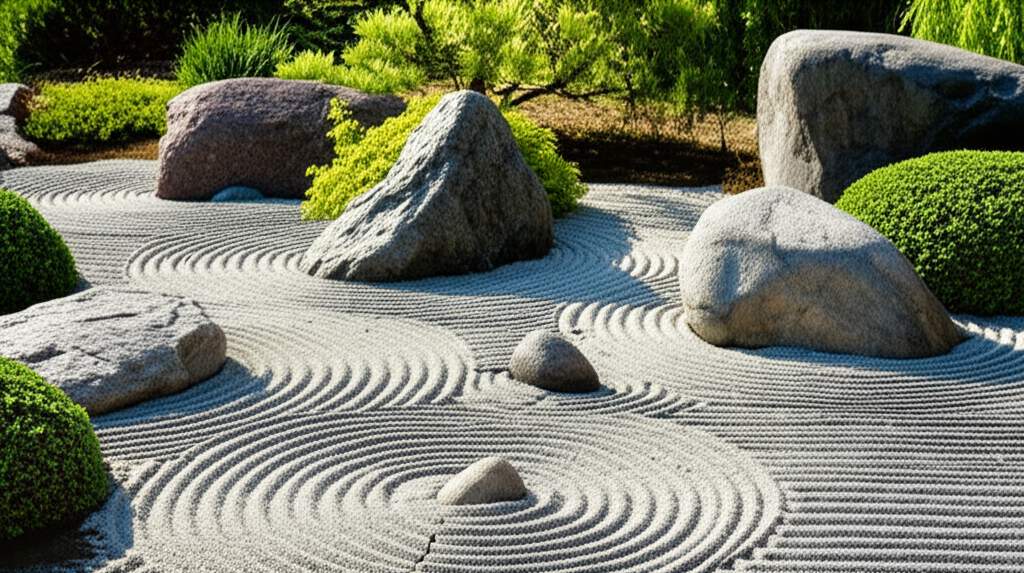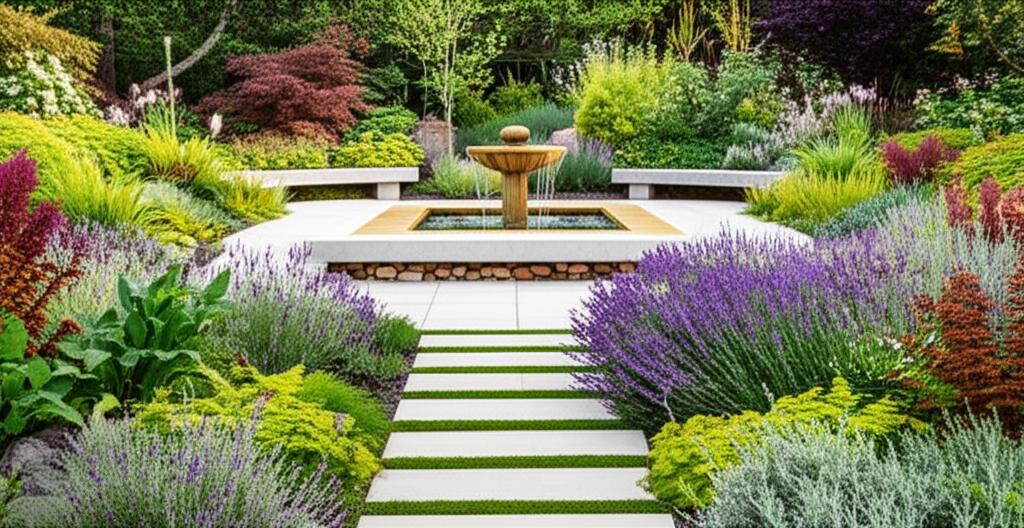Craft Serenity with a Small-Space Zen Garden
A Zen meditation garden offers a profound escape from the daily grind, providing a sanctuary for mindfulness and relaxation right in your own outdoor space. You do not need sprawling acres or a hefty budget to achieve this tranquility; even a modest corner can become a haven of peace with thoughtful design. This guide from Dickinsons Garden Center equips you with practical steps to create a calming retreat, detailing materials, costs, and layouts tailored for small areas.
Defining the Essence of a Zen Garden
Known as karesansui or dry landscape gardens, Zen gardens embody simplicity and balance to foster mental clarity. Unlike vibrant flower beds, these spaces rely on minimal elements like gravel, rocks, and sparse greenery to evoke stillness. Key components often include gravel symbolizing water, rocks arranged as natural features, and limited plants such as moss or bamboo. A seating spot or subtle path enhances the invitation to quiet reflection, ensuring the garden remains uncluttered and serene.
Selecting the Perfect Spot
Finding the right location is crucial for your Zen garden's effectiveness. Seek a secluded area away from household bustle or street noise, whether it is a backyard nook, a side alley, or a compact patio. Consider a balance of shade and sunlight for comfort during meditation, and ensure the spot is easily accessible to encourage regular use. Remarkably, even a 6 by 6 foot space can transform into a powerful retreat with the right approach.
Designing a Balanced Layout
Start with a basic sketch to map out your garden's flow. Position a central seating area to take in the entire view, arrange rocks in odd-numbered clusters for a natural feel, and leave ample open gravel spaces to suggest expansive elements like water or sky. Avoid rigid symmetry; instead, aim for a harmonious yet organic arrangement that soothes the eye. This balance invites calm without demanding perfection, aligning with Zen principles.
Estimating Materials and Budget
Building a Zen garden can be surprisingly affordable, especially for smaller spaces. Gravel or sand, representing fluidity, costs around 40 to 60 dollars per cubic yard, with a small garden needing just one or two yards. Rocks vary from a few dollars for small stones to 100 or 300 dollars for larger boulders. Edging materials to contain gravel range from 1 to 5 dollars per foot, while minimal plants like moss or dwarf evergreens might cost 20 to 50 dollars each. A simple bench for seating could add 100 to 200 dollars. For a do-it-yourself project, expect to spend between 300 and 800 dollars total.
Step-by-Step Creation Process
- Clear the chosen area of grass, weeds, and debris to establish a flat base.
- Set up edging with wood or stone to prevent gravel spillage.
- Lay landscape fabric to block weeds and stabilize the surface.
- Position larger rocks first, followed by smaller ones, considering sightlines from your seating spot.
- Spread gravel or sand evenly, about 2 to 3 inches deep, over the fabric.
- Use a wide-tooth rake to draw gentle patterns, mimicking water ripples.
- Introduce sparse plants and place a comfortable seat to complete the space.
This process can often be completed in a weekend for a compact garden, making it an accessible project for most.
Choosing Suitable Plants
Zen gardens thrive on restraint, so select plants that require little upkeep and maintain a subtle presence. Moss offers a soft ground cover, while bamboo adds height and a soothing rustle. Japanese maples provide delicate seasonal color, and dwarf evergreens or ornamental grasses contribute structure and texture. Limit the number of plants to preserve the garden's tranquil simplicity, ensuring they enhance rather than dominate the space.
Upkeep for Lasting Calm
While Zen gardens demand less care than traditional landscapes, they still benefit from regular attention. Rake the gravel frequently to refresh patterns, a task that can double as meditative practice. Remove any weeds sprouting through the fabric, clean rocks to maintain their natural beauty, and trim plants to prevent overgrowth. These simple chores not only sustain the garden's appearance but also deepen your connection to the space.
Unlocking Mental Wellness
Beyond mere aesthetics, a Zen garden nurtures mental health through its very design. The act of raking gravel clears the mind, while sitting amidst minimalist elements eases stress. Studies suggest that natural environments lower anxiety and sharpen focus, and a personal Zen garden brings these advantages directly to your doorstep, offering a daily dose of peace without leaving home.
Adding Personal Flair
While rooted in tradition, your Zen garden can reflect individual tastes with subtle touches. A small fountain might introduce calming water sounds, or a minimalist lantern could enhance evening ambiance. If meditation is your focus, a cushion or mat can define your practice area; for quiet reading, a sturdy bench suffices. Keep additions restrained to maintain the garden's core serenity, ensuring each element serves your personal path to peace.
Bringing Your Vision to Life
Embarking on a Zen garden project is within reach for anyone seeking solace, regardless of space or skill level. Begin with a small, manageable area, prioritize simplicity, and select elements that resonate with your sense of calm. As you shape this retreat, it evolves into more than a garden; it becomes a vital space for stress relief and balance. With minimal effort and consistent care, this sanctuary will offer enduring tranquility day after day.

